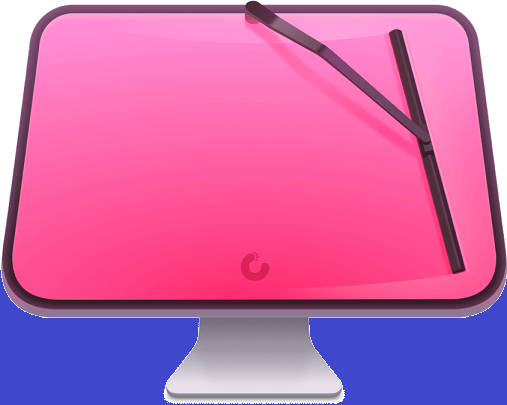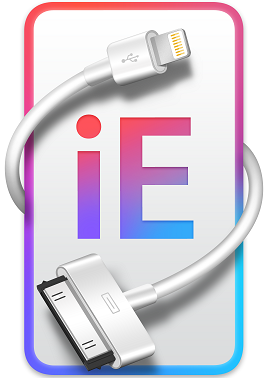Table of Contents
Parallel Desktop: Bridging Realms with Virtual Harmony
Parallel Desktop for Mac Free Download Crack, a pioneer in the field of desktop virtualization, has emerged as a versatile solution for users seeking to harmonize diverse operating systems within a single machine. Its innovative approach to virtualization empowers users with the ability to seamlessly run multiple operating systems side by side, fostering an environment conducive to development, testing, and cross-platform compatibility. In this exploration, we delve into the myriad features, pros, and cons that define Parallel Desktop, evaluating its standing in the competitive landscape of virtualization solutions.

Parallel Desktop Features:
- Operating System Coexistence: Parallel Desktop for Mac Free Download Cracks standout feature is its ability to facilitate the simultaneous operation of multiple operating systems on a single machine. This allows users to create and manage virtual machines, each running a distinct OS. Whether it’s Windows on a macOS device or vice versa, the software ensures a fluid experience, making it an invaluable asset for users requiring cross-platform functionality.
- User-Friendly Interface: Parallel Desktop for Mac Free Download Crack distinguishes itself with an intuitive and user-friendly interface. Even those with limited technical expertise can navigate the process of setting up virtual machines effortlessly. The software’s streamlined approach simplifies tasks such as creating, cloning, and managing virtual environments, making it accessible to a broad spectrum of users.
- macOS Integration: A significant strength lies in Parallel Desktop for Mac Free Download Crack seamless integration with macOS, offering users a native feel for Windows applications on Apple hardware. Coherence mode exemplifies this integration, allowing Windows applications to operate seamlessly alongside macOS applications. This unified desktop experience enhances user convenience, blurring the boundaries between different operating systems.
- Performance Optimization: Parallel Desktop for Mac Free Download Crack is optimized for high performance, ensuring that resource-intensive applications and demanding tasks can be executed within virtual environments without compromising speed. The software’s support for DirectX and OpenGL contributes to smooth graphics rendering, making it suitable for professionals engaged in design, multimedia, and gaming.
- Snapshots and Rollback: The software’s snapshot and rollback features provide users with the ability to create and restore snapshots of virtual machines at various points in time. This proves invaluable for testing and development scenarios, allowing users to experiment freely without the fear of irreversible changes. This feature enhances the software’s versatility, catering to a diverse range of user needs.
- Hardware Support: Parallel Desktop keeps pace with technological advancements by offering support for the latest hardware. This commitment ensures optimal performance and resource utilization for virtual machines, aligning the software with the evolving landscape of hardware innovations.
Pros:
- Seamless Integration: Parallel Desktop excels in providing a seamless integration of different operating systems, allowing users to switch between environments effortlessly. The Coherence mode, in particular, delivers a desktop experience where Windows and macOS applications coexist harmoniously, reducing the friction often associated with cross-platform usage.
- Performance Excellence: One of the major strengths of Parallel Desktop is its commitment to high performance. The software’s optimization for resource-intensive applications and graphics-intensive tasks sets it apart, making it a preferred choice for professionals in fields where computing power is paramount.
- User-Friendly Design: The user-friendly interface of Parallel Desktop caters to a broad audience, including those who may not have extensive technical knowledge. The simplified process of creating and managing virtual machines ensures that users can harness the benefits of virtualization without navigating steep learning curves.
- Snapshot and Rollback Capabilities: The ability to create snapshots and roll back to previous states is a boon for developers and testers. This feature provides a safety net for experimentation, allowing users to explore different configurations and setups without the fear of irreversible changes.
- Cross-Platform Compatibility: Parallel Desktop’s support for running Windows on macOS and vice versa enhances cross-platform compatibility. This is particularly valuable for users who require access to applications exclusive to a particular operating system, bridging the gap between different ecosystems.
- Continuous Hardware Support: The commitment to staying current with the latest hardware developments ensures that Parallel Desktop users can leverage the full potential of their machines. This compatibility with new hardware advancements reinforces the software’s relevance in the ever-evolving landscape of computing.
Cons:
- Resource Consumption: Running multiple operating systems simultaneously inevitably incurs a higher resource overhead. Parallel Desktop, like other virtualization solutions, may demand significant RAM and CPU resources, potentially impacting the performance of other applications running on the host machine.
- Cost Considerations: While Parallel Desktop offers a robust set of features, its premium nature may deter budget-conscious users. The cost of licensing for the software, especially for the Pro and Business editions, can be a limiting factor for individual users or small businesses with constrained budgets.
- Learning Curve for Advanced Features: While the basic functionalities of Parallel Desktop are accessible to users of varying technical backgrounds, delving into more advanced features may present a steeper learning curve. Users aiming to harness the full potential of the software may need to invest time in learning the intricacies of its more advanced capabilities.
- Dependency on Host System Stability: The stability and performance of virtual machines in Parallel Desktop are inherently tied to the stability of the host system. If the host system encounters issues or undergoes performance degradation, it can impact the overall experience within virtualized environments.
- Limited Gaming Performance: Despite its optimization for graphics-intensive tasks, Parallel Desktop may not match the performance of a dedicated gaming setup. Gamers seeking the highest possible frame rates and graphical fidelity might find that a native installation on a dedicated system provides a superior gaming experience.
- Limited Linux Integration: While Parallel Desktop excels in integrating macOS and Windows, its support for Linux environments may not be as comprehensive. Users heavily reliant on Linux-based systems for development or other purposes may find alternative virtualization solutions with better Linux integration more suitable.
Conclusion:
Parallel Desktop stands as a robust and feature-rich solution for desktop virtualization, catering to a diverse range of users with its seamless integration of different operating systems. Its user-friendly interface, high performance, and snapshot capabilities make it a preferred choice for developers, testers, and professionals requiring cross-platform functionality. However, considerations such as resource consumption, cost, and potential limitations in certain use cases highlight the importance of aligning the software with specific user needs and expectations. As technology continues to advance, Parallel Desktop’s commitment to staying current with hardware developments positions it as a relevant player in the dynamic landscape of virtualization solutions.
Parallel Desktop How to Install?
Installing Parallel Desktop is a straightforward process, and you can accomplish it in just a few steps. Below is a simplified guide on how to install Parallel Desktop on your system in three easy steps:
Step 1: Obtain Parallel Desktop Software
Before you begin the installation process, you need to acquire the Parallel Desktop software. Follow these steps:
- Download the Installer:
- Use the provided download link to obtain the Parallel Desktop installer.
- Ensure that you download the version compatible with your operating system (macOS).
- Product Key:
- If you received a product key during the purchase, keep it handy. You might need it during the installation process.
Step 2: Install Parallel Desktop
Once you have the Parallel Desktop installer, you can proceed with the installation:
- Run the Installer:
- Locate the downloaded installer file (usually in your Downloads folder) and double-click on it to run the installation wizard.
- Follow Installation Wizard:
- The Parallel Desktop installation wizard will guide you through the process.
- You may be prompted to enter your administrator password to allow the installation to proceed.
- Enter Product Key (if required):
- During the installation, you might be asked to enter the product key you received during the purchase.
- Input the product key as prompted, and continue with the installation.
- Configuration Options:
- The installation wizard may present configuration options. Review and customize these settings based on your preferences.
- Wait for Installation:
- Allow the installation process to complete. This may take a few minutes, depending on your system’s performance.
S3: Set Up Your Virtual Machines
After successfully installing Parallel Desktop, you can start creating and setting up virtual machines:
- Launch Parallel Desktop:
- Once the installation is complete, launch Parallel Desktop from your Applications folder or the location where you installed the software.
- Create a New Virtual Machine:
- Use the software’s interface to create a new virtual machine. You’ll typically find an option like “New” or “Create” to initiate this process.
- Follow Configuration Steps:
- The software will guide you through configuring your virtual machine. This includes selecting the operating system, allocating resources (such as RAM and CPU), and specifying storage settings.
- Install the Guest OS:
- During the virtual machine setup, you’ll be prompted to install the guest operating system. Follow the on-screen instructions to install the desired OS within the virtual environment.
- Complete Setup:
- Once the virtual machine setup is complete, you can start the virtual machine and use your chosen operating system alongside your host system.
By following these three simple steps, you’ll have Parallel Desktop installed on your system, ready to create and manage virtual machines with ease.
![Windows 11 Activator Full Indir – Turkce PC + DLC Windows 11 Activator Free Download 2022 for 32-64Bit [Latest]](https://i0.wp.com/softactivators.com/wp-content/uploads/2021/12/Windows-11.jpg?resize=150%2C150&ssl=1)








